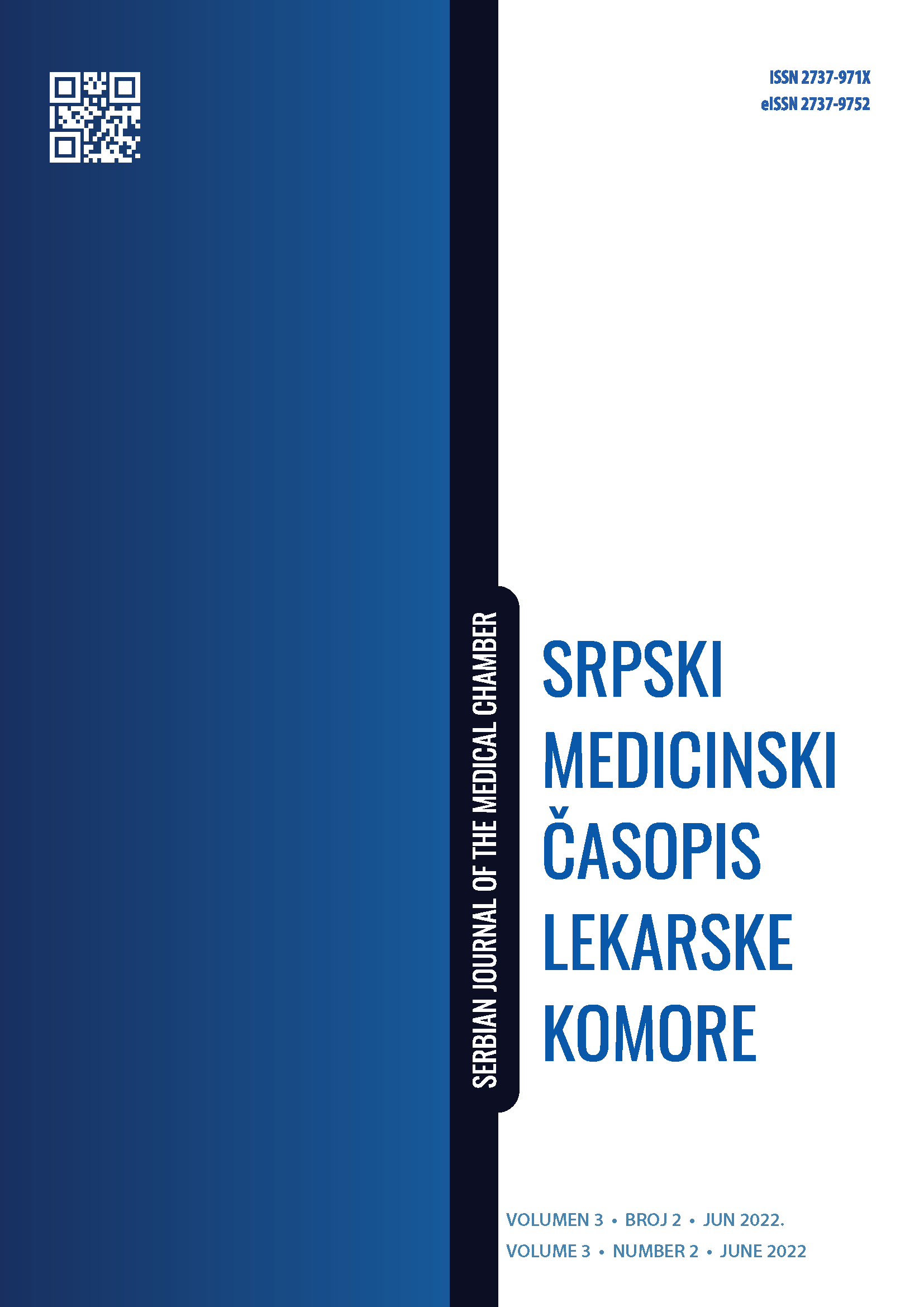THE IMPORTANCE OF A MULTIDISCIPLINARY DIAGNOSTIC AND THERAPEUTIC APPROACH TO PAINFUL SYMPHYSIS SYNDROME IN ATHLETES
Abstract
Painful symphysis syndrome (pubalgia) in athletes is a particular injury, a painful condition, and dysfunction of the femoroinguinal region, which occurs due to the disproportion in strength between the abdominal wall muscles and the muscles of the lower extremities. This study aims to theoretically analyze the importance of a multidisciplinary diagnostic and therapeutic approach to painful symphysis syndrome in athletes. More than seventy causes of pubalgia have been presented in literature, most commonly linked to sports factors. Activities that include repetitive strong kicks, rotational movements, circumduction, and torsion, are
risk factors. The syndrome was first registered in football players, and it mostly occurs in male athletes under the age of forty. Establishing a diagnosis is difficult,due to the complex anatomy and the overlapping of symptoms between different groin injuries. The therapeutic approach depends on the complexity of the injuries and the dynamics of the patient's recovery. It entails observing the principles of initiating treatment with minimally invasive modalities and reserving surgical treatment as the final therapeutic option, after which it is necessary to conduct an appropriate rehabilitation program, tailored to the pain and the dynamics of recovery. Most athletes resume their sports activities after two to three months, with no recurrence of pubalgia after surgical treatment. However, bearing in mind that the occurrence of pubalgia prevents the patients from engaging in sports activities over a prolonged period, special attention should be directed towards the prevention of this painful syndrome. Taking this into consideration, prevention should begin at the earliest age, through a daily program of exercises for strengthening the muscles of the anterior abdominal wall, with special emphasis on the oblique and transverse abdominal muscles.
References
2. Meyers WC, Yoo E, Devon ON, Jain N, Horner M, Lauencin C, et al. Understanding “sports hernia” (athletic pubalgia) : the anatomic and pathophysiologic basis for abdominal and groin pain in athletes. Operative techniques in sports medicine. 2008. 20(1):33-45.
3. Omar IM, Zoga AC, Kavanagh EC, Koulouris G, Bergin D, Gopez AG, et al. Athletic pubalgia and "sports hernia": optimal MR imaging technique and findings. Radiographics. 2008 Sep-Oct; 28(5):1415-38.
4. Dimitrakopoulou A, Schilders E. Sportsman's hernia? An ambiguous term. J Hip Preserv Surg. 2016 Feb 24; 3(1):16-22.
5. Balconi G. US in pubalgia. J Ultrasound. 2011 Sep; 14(3):157-66.
6. Cavalli M, Bombini G, Campanelli G. Pubic inguinal pain syndrome: the so-called sports hernia. Surg Technol Int. 2014 Mar; 24:189-94.
7. Morales-Conde S, Socas M, Barranco A. Sportsmen hernia: what do we know? Hernia. 2010 Feb; 14(1):5-15.
8. Jevtić M, Vranić K, Zečević M. Rehabilitacija posttraumatskih i ortopedskih bolesnika. Kragujevac-Beograd: Medicinski fakultet univerziteta u Kragujevcu, 1995.
9. Garvey JF, Read JW, Turner A. Sportsman hernia: what can we do? Hernia. 2010 Feb; 14(1):17-25.
10. Nesovic B. The painful symphysis syndrome in athletes and treatment possibilities Reflection on the topic after 20 years of personal experience. Aspetar Sports Med J. 2012 Dec; 3:254–257.
11. Gerhardt MB, Brown JA, Giza E. Occult groin injuries: athletic pubalgia, sports hernia, and osteitis pubis. Practical orthopedics, sports medicine and arthroscopy, ed. DA Johnson and RA Pedowitz 2006. Baltimore, MD: Lippincott Williams & Wilkins, 531-545.
12. Janković S, Delimar D, Hudetz D. Sindrom bolne prepone: The groin pain syndrome. Arh Hig Rada Toksikol. 2001 Dec; 52(4):421-8.
13. Kachingwe AF, Grech S. Proposed algorithm for the management of athletes with athletic pubalgia (sports hernia): a case series. J Orthop Sports Phys Ther. 2008 Dec; 38(12):768-81.
14. Ellsworth AA, Zoland MP, Tyler TF. Athletic pubalgia and associated rehabilitation. Int J Sports Phys Ther. 2014 Nov; 9(6):774-84.
15. Swan KG Jr, Wolcott M. The athletic hernia: a systematic review. Clin Orthop Relat Res. 2007 Feb; 455:78-87.
16. Minnich JM, Hanks JB, Muschaweck U, Brunt LM, Diduch DR. Sports hernia: diagnosis and treatment highlighting a minimal repair surgical technique. Am J Sports Med. 2011 Jun; 39(6):1341-9.
17. Koutserimpas C, Ioannidis A, Konstantinidis MK, Makris MC, Antonakopoulos F, Mazarakis A, et al. Insights in clinical examination and diagnosis of Athletic Pubalgia. G Chir. 2020 Jan-Feb; 41(1):131-135.
18. Serner A, van Eijck CH, Beumer BR, Hölmich P, Weir A, de Vos RJ. Study quality on groin injury management remains low: a systematic review on treatment of groin pain in athletes. Br J Sports Med. 2015 Jun; 49(12):813.
19. Cohen B, Kleinhenz D, Schiller J, Tabaddor R. Understanding Athletic Pubalgia: A Review. R I Med J (2013). 2016 Oct 4; 99(10):31-35.
20. Kajetanek C, Benoît O, Granger B, Menegaux F, Chereau N, Pascal-Mousselard H, Khiami F. Athletic pubalgia: Return to play after targeted surgery. Orthop Traumatol Surg Res. 2018 Jun; 104(4):469-472.
21. Paajanen H, Brinck T, Hermunen H, Airo I. Laparoscopic surgery for chronic groin pain in athletes is more effective than nonoperative treatment: a randomized clinical trial with magnetic resonance imaging of 60 patients with sportsman's hernia (athletic pubalgia). Surgery. 2011 Jul; 150(1):99-107.

